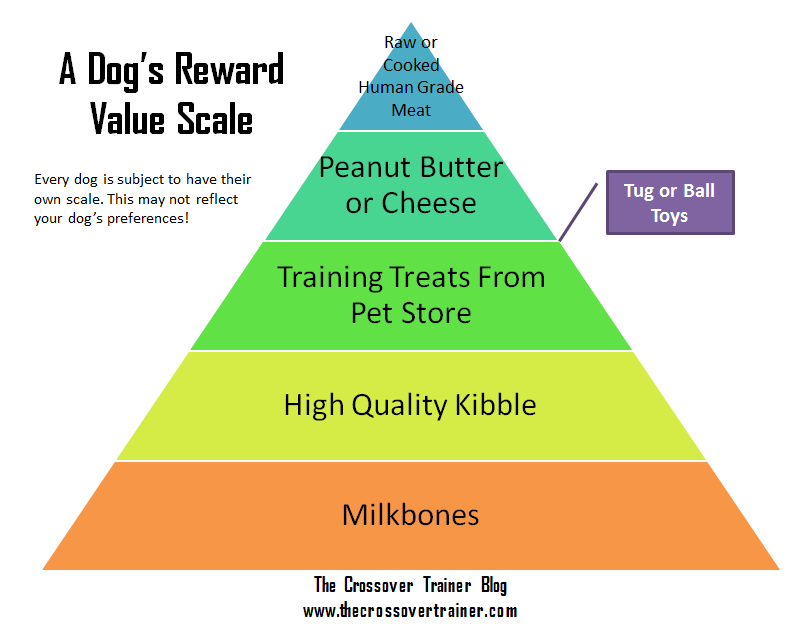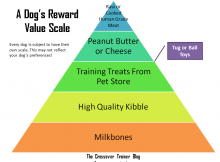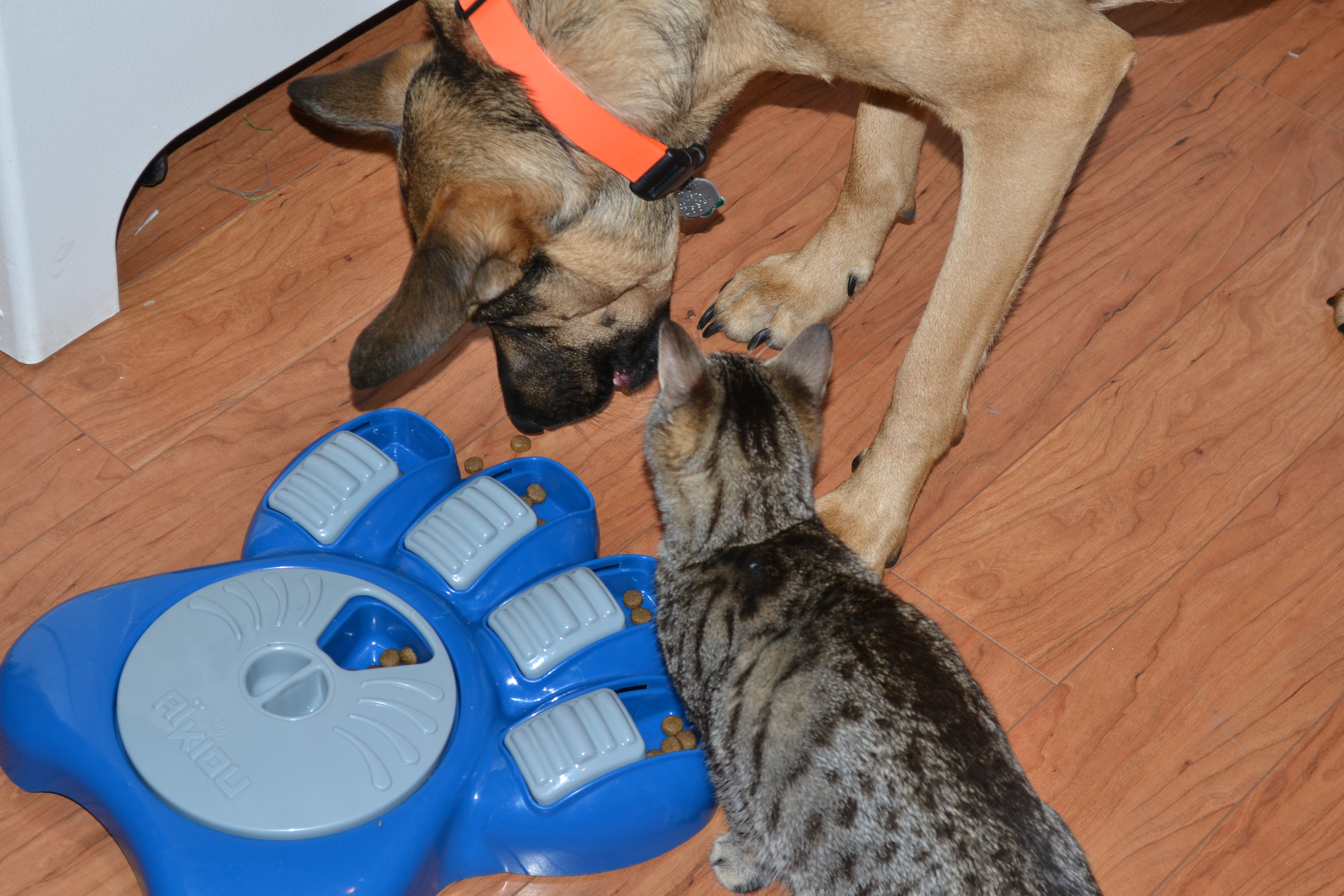This post is a follow-up to this post: My Response to a Reader. The reader’s question was this: “How you have used the principles and processes that form the foundation of clicker training, especially when your original approach using C/T doesn’t work.”
Click/Treat is about way more than a click and a treat. Every dog has their preferences. I still find out about new rewards I can use with my dogs even though I’ve had them for a while. They are individuals. There are a few categories we can look at to discover what dogs find motivating: food, toys, control, premack, and other behaviors. All of these rewards are incredibly powerful when used correctly.
Food

Food is the most obvious one. All dogs are food motivated. Some more than others, but they are ALL food motivated. Every dog has to eat in order to survive. Many times though, when a dog is new to the learning process (new to understanding that their behaviors can actually cause things to happen), they get frustrated and give up. This is when owners stop and think their dog won’t work for food. Another factor that can lower a dog’s motivation to work for food is free feeding or even free meals. Something as simple as removing food bowls and providing food puzzle games can help a dog understand that they actually do have the power and ability to make things happen. Working on food puzzles can gradually progress to a simple target game with their owner: Touch my hand, click, get food. Check out this video:
To begin with, it can help to start with something more valuable than milkbones or kibble. Think of the food as being your dog’s currency – would you rather work for $8/hr, $20/hr, or even $100/hr? In training, the reward must be something the dog wants to work for, if he’s used to getting something for free, he will likely pass on working for it!
Toys
Nowadays, there are thousands of toys to choose from. Stuffed toys, rope toys, tug toys, all kinds of balls, and even anything you can make a home! If your dog loves to play, there’s a good chance you can use that energy in training. Because positive reinforcement based training encourages the dog instead of correcting the dog, every play session can also be a training session. (In fact, it is whether you’re training or not because your dog’s brain is always on and learning!)
Control
Just like we like being able to control our lives, dogs would love the opportunity to decide some things for themselves. Once they learn that their behavior and make things happen (like a sit makes the door open or laying down makes food fall onto the mat), dogs learn how to change their behavior to control their environment. This is part of why dogs love clicker training – not only to they receive their favorite foods or toys, they get to make it happen when they make the right choices. The dog gets the power to control their environment and the human creates behaviors that are socially appropriate. It’s a win-win!
Premack Principle
I’ve written about this at length before so be sure to check out these articles. The basis of this principle is that the dog must do something that has a low probability of happening by itself before it is allowed to do something of high probability. The best example of this having the dog walk on a loose leash before he is allowed to go sniff or mark a tree. Speaking of marking, this is usually a very rewarding behavior for a dog. You can actually use marking as a reward for good behavior!
Other Behaviors
Not all behaviors are rewarding, but there are some behaviors you might have taught along the way that your dog will do because he actually enjoys the actual behavior, not because there’s a treat to earn. Personally, my dog enjoys spinning so I can cue this behavior after a not-so-fun behavior to reward it (like a down). If your dog likes rolling over, heeling, jumping, spinning, or any other fun behavior, consider using those as rewards to less-fun behaviors.
In conclusion, I want to bring up the safety factor again. If your dog doesn’t feel safe (even though he is safe), any reward you might try will probably not be enough to motivate him. Who wants to learn something new when they believe their safety is at risk? No one. Or in some cases, the dog’s desire for the reward (such a food) can make them approach a scary person or object more quickly than they normally would which can be dangerous if that scary person were to reach out to pet them!
My next post in this series will be about when I choose to leave the clicker behind – which is happening more and more frequently these days!




